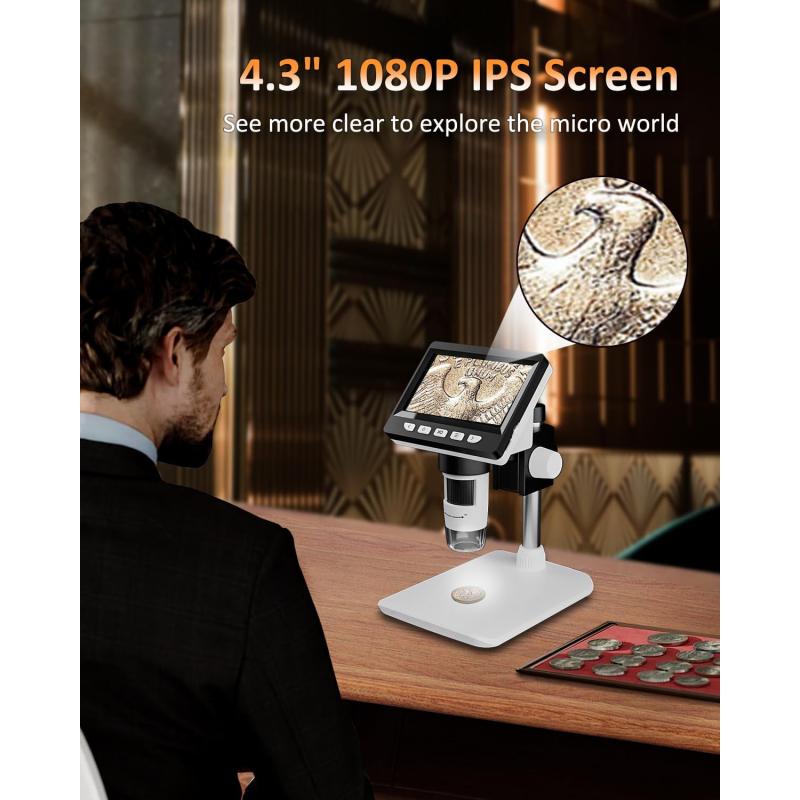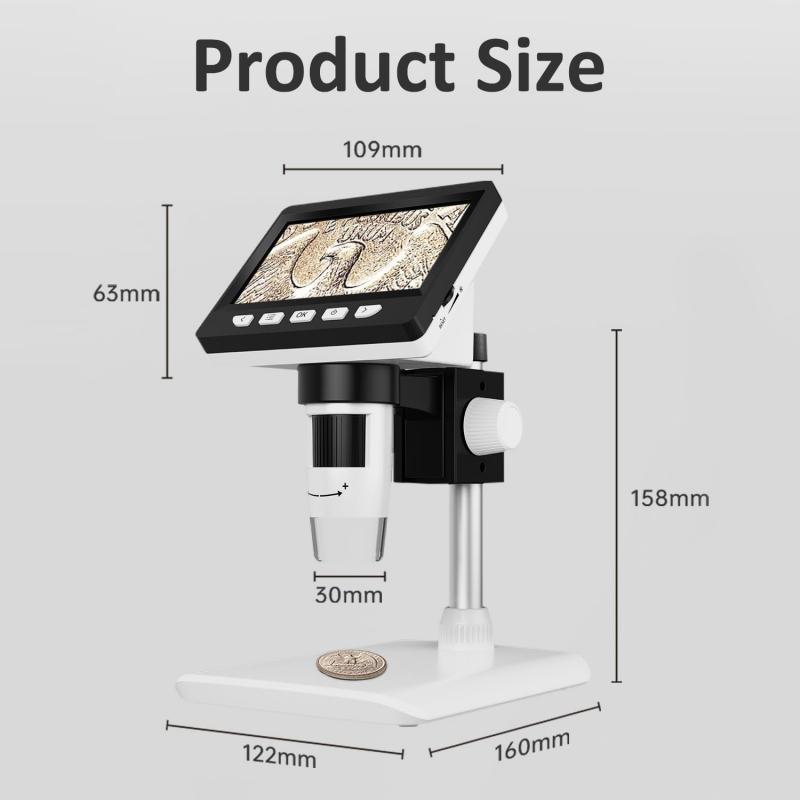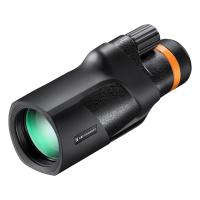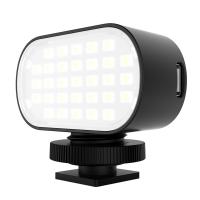What Is A Good Magnification For A Microscope?
The ideal magnification for a microscope depends on the specimen being observed and the purpose of the observation. Generally, a magnification of 40x to 400x is suitable for observing cells, tissues, and small organisms. For more detailed observations of cellular structures, a magnification of 1000x or higher may be necessary. However, it is important to note that higher magnifications may require specialized equipment and techniques to maintain image quality and clarity. Additionally, the quality of the microscope and the lenses used can also affect the magnification and clarity of the image. Therefore, it is important to choose a microscope with appropriate magnification capabilities and high-quality lenses for the intended use.
1、 Optical magnification vs digital magnification
What is a good magnification for a microscope? The answer to this question depends on the purpose of the microscope. For general use, a magnification of 40x to 400x is sufficient. However, for more specialized applications such as microbiology or metallurgy, higher magnifications may be required.
When it comes to magnification, there are two types: optical magnification and digital magnification. Optical magnification is achieved through the use of lenses and is limited by the quality of the lenses and the physics of light. Digital magnification, on the other hand, is achieved through software and can be increased indefinitely.
While digital magnification may seem like the better option, it has its limitations. Digital magnification can lead to pixelation and loss of image quality, especially when magnifying beyond the resolution of the camera. Additionally, digital magnification cannot reveal details that are not captured by the camera, whereas optical magnification can reveal details that are beyond the resolution of the camera.
In recent years, there has been a trend towards using a combination of optical and digital magnification. This allows for the benefits of both types of magnification while minimizing their limitations. For example, a microscope may have a maximum optical magnification of 1000x, but with the addition of digital magnification, it can achieve a total magnification of 5000x.
In conclusion, the appropriate magnification for a microscope depends on the intended use. While digital magnification has its advantages, it is important to consider its limitations and to use it in conjunction with optical magnification for the best results.

2、 Total magnification calculation
What is a good magnification for a microscope?
The answer to this question depends on what you are trying to observe. Generally, a good magnification for a microscope is one that allows you to see the details you need to observe. For example, if you are observing cells, a magnification of 400x to 1000x is usually sufficient. However, if you are observing bacteria or other microorganisms, you may need a higher magnification of 1000x to 2000x.
It is important to note that higher magnification does not always mean better observation. At very high magnifications, the image may become blurry or distorted, making it difficult to observe the details you need. Additionally, higher magnification often requires more specialized equipment and techniques, which can be more expensive and time-consuming.
Total magnification calculation
To calculate the total magnification of a microscope, you need to multiply the magnification of the objective lens by the magnification of the eyepiece. For example, if you are using a microscope with a 10x objective lens and a 10x eyepiece, the total magnification would be 100x (10 x 10).
It is important to note that the total magnification is not the only factor that affects the quality of the image. Other factors, such as the quality of the lenses and the lighting conditions, can also have a significant impact on the clarity and detail of the image.
In conclusion, the best magnification for a microscope depends on what you are trying to observe. It is important to choose a magnification that allows you to see the details you need without sacrificing image quality. Additionally, it is important to consider other factors, such as the quality of the lenses and lighting conditions, when choosing a microscope and setting the magnification.

3、 Resolution and magnification
What is a good magnification for a microscope? This is a common question asked by those who are new to microscopy. The answer to this question depends on what you want to observe and the type of microscope you are using.
In general, a good magnification for a microscope is one that allows you to see the details you are interested in observing. For example, if you are observing cells, you may need a magnification of at least 400x to see the individual cells clearly. However, if you are observing bacteria, you may need a magnification of 1000x or higher to see the individual cells clearly.
It is important to note that magnification alone does not determine the quality of the image. Resolution is also an important factor to consider. Resolution refers to the ability of the microscope to distinguish between two closely spaced objects. A microscope with high resolution will be able to distinguish between two objects that are very close together, while a microscope with low resolution will not be able to distinguish between them.
In recent years, there has been a shift towards using digital microscopes, which offer high magnification and resolution, as well as the ability to capture and store images and videos. These microscopes are becoming increasingly popular in research and education, as they allow for easy sharing and collaboration.
In conclusion, a good magnification for a microscope depends on what you want to observe and the type of microscope you are using. However, it is important to also consider resolution when choosing a microscope, as it is a key factor in determining the quality of the image.

4、 Magnification and field of view
What is a good magnification for a microscope? The answer to this question depends on the purpose of the microscope and the specimen being observed. Generally, a good magnification for a microscope is one that allows for clear and detailed observation of the specimen without sacrificing the field of view.
Magnification and field of view are two important factors to consider when choosing a microscope. Magnification refers to the degree to which the specimen is enlarged, while field of view refers to the area of the specimen that can be seen at a given magnification. A higher magnification will result in a smaller field of view, while a lower magnification will result in a larger field of view.
For general laboratory use, a microscope with a magnification range of 40x to 400x is typically sufficient. This range allows for observation of a wide variety of specimens, from cells to small organisms. However, for more specialized applications, such as microbiology or histology, higher magnifications may be necessary.
It is important to note that magnification alone does not determine the quality of the microscope. Other factors, such as resolution, contrast, and depth of field, also play a role in the clarity and detail of the image. Therefore, it is important to choose a microscope that is appropriate for the specific application and specimen being observed.
In recent years, advances in technology have led to the development of digital microscopes, which allow for high-resolution imaging and analysis. These microscopes offer a range of magnifications and field of view options, as well as the ability to capture and store images for further analysis.
In conclusion, a good magnification for a microscope depends on the purpose of the microscope and the specimen being observed. A range of 40x to 400x is typically sufficient for general laboratory use, but higher magnifications may be necessary for specialized applications. It is important to consider other factors, such as resolution and contrast, when choosing a microscope, and to stay up-to-date with the latest technological advances in microscopy.






























There are no comments for this blog.